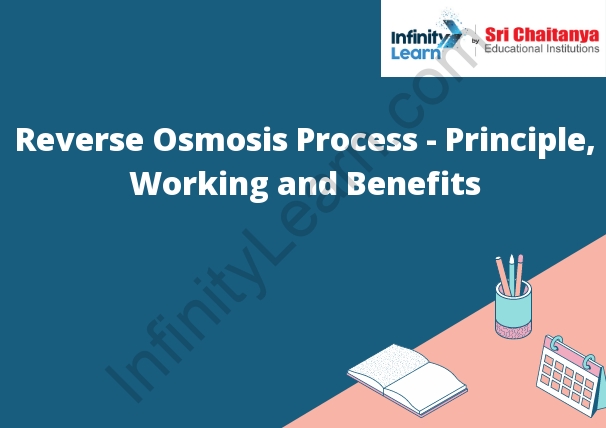Table of Contents
What is the Reverse Osmosis Process? ;
Reverse osmosis (RO) is a water purification technology that uses a semipermeable membrane to remove ions, molecules, and larger particles from drinking water. In reverse osmosis, an applied pressure is used to overcome osmotic pressure, forcing water molecules through a membrane while excluding contaminants. The technology is commonly used in water purification plants, particularly in the United States.

What do Students Mean by Reverse Osmosis?
Reverse osmosis is a water purification technology that uses a semipermeable membrane to remove contaminants from water. The process works by forcing water molecules through a membrane that has small holes or pores. The smaller water molecules pass through the membrane while the larger molecules, such as salt and other contaminants, are blocked.
Principle of Reverse Osmosis Process
The reverse osmosis process is a water purification process that uses a semipermeable membrane to remove pollutants and particles from water. The membrane allows water molecules to pass through while trapping pollutants and particles. The water is then forced through the membrane under pressure, which causes the pollutants and particles to be expelled from the water.
Reverse Osmosis Process – Working
The reverse osmosis process is based on the principle of osmosis, which is the natural tendency of water to move from an area of high concentration to an area of low concentration. In the reverse osmosis process, water is forced through a semipermeable membrane to an area of low concentration, such as a saltwater reservoir. The water is then forced to pass through a filter to remove any impurities.
Benefits of Reverse Osmosis
Reverse osmosis is a water purification process that removes dissolved minerals and other impurities from water. It is often used to produce drinking water, although it can also be used for industrial purposes.
Some of the benefits of reverse osmosis include:
1. It produces safe, clean drinking water.
2. It removes harmful pollutants and contaminants from water.
3. It prevents the spread of water-borne diseases.
4. It improves the taste and quality of water.
5. It is a cost-effective way to purify water.
How the Process of Reverse Osmosis is Used in Everyday Applications?
In a nutshell, the process of reverse osmosis is used to remove contaminants from water. It does this by using a semipermeable membrane that allows water molecules to pass through, but blocks larger molecules, such as salt, pollutants, and bacteria.
This process is used in a variety of everyday applications, including:
Drinking water
Water purification
Food processing
Aquaculture
Wastewater treatment
Diagnostic testing
Is There any Disadvantage of the Process of Reverse Osmosis?
Reverse osmosis does have a few disadvantages. One is that it can waste a lot of water. Another is that it can remove some of the beneficial minerals from water.









